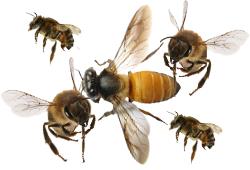HELP SAVE THE BEES ON LONG ISLAND, NEW YORK
Help Long Island Bee Removal help the Planet and save the honey bees by not hiring pest control companies to exterminate them or attempting to get rid of the honey bees yourself. Unlike other Long Island pest control companies, we offer live honey bee swarm removal as part of our Nassau County bee control services. Whenever possible, Long Island Bee Removal places these honey bees back into the hands of Long Island beekeepers, or we raise them as beekeepers ourselves in Long Island, New York. Usually, a honey bee hive will contain twenty-five to one hundred pounds of honey. Following the removal of the honey bees, removing the honeycomb from the walls of your Long Island residence is a critical component in preventing future problems with honey bees and the prevention of a rodent and bug infestation. Long Island Bee Removal will remove the honeycomb to prevent future pest control issues.
HONEY BEE SWARMS LONG ISLAND, NEW YORK
A honey bee swarm is a large number of bees searching for a new home. Bee swarms may be intimidating, but a swarm of honey bees is more docile than nesting honeybees. Swarming is the bee's method of colony reproduction. When a new queen bee is born, the old queen and approximately half of the worker honey bees leave the hive, searching for a new place to build a hive. Honeybee swarms on Long Island usually occur during the Spring months.
AFRICANIZED HONEY BEES - KILLER BEES
In 1956, African honey bees were imported into Brazil for cross-breeding with local honey bee populations to increase honey production. In 1957, twenty-six African queen honey bees and swarms of European worker honey bees escaped from an experimental apiary in Brazil. The escaped African queen honeybees have since created hybrid populations with European honey bees. The Africanized honey bee populations gradually spread northward and have appeared in Texas, Arizona, Nevada, New Mexico, Florida, California, Louisiana, Arkansas, Utah, Colorado, Tennessee, and Georgia. The sting of the Africanized honey bee is no more potent than any other honey bee variety. Although Africanized honey bees are similar in appearance to European honey bees, they tend to be slightly smaller and darker in color. Although Africanized honey bees don't actively search for people to attack, they are more dangerous because they are easily provoked and attack in greater numbers.









